 |
 |
 |
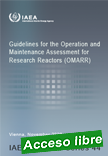 |
Guidelines for the Operation and Maintenance Assessment for Research Reactors (OMARR)
EPR-Combined Emergencies ¦ 96 pages ¦ English ¦ Date Published: 2020
The purpose of this publication is to provide information on the preparation, implementation and reporting of OMARR missions, including follow-up missions. The information provided may also be used for O&M self-assessment conducted by the operating organization of a research reactor facility.
|
.
|
 |
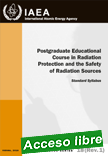 |
Postgraduate Educational Course in Radiation Protection and the Safety of Radiation Sources
Colección Cursos de Capacitación No. 18 (Rev. 1) ¦ Spanish ¦ IAEA-TCS-18 (Rev. 1) ¦ 94 pages ¦ Date published: 2020
The Postgraduate Educational Course in Radiation Protection and the Safety of Radiation Sources (PGEC) is a ‘long-duration’ course that provides the initial basic professional training for young professionals who are expected to become, over the course of time, regulators, decision makers, qualified experts in radiation protection or trainers in radiation protection and safety of radiation sources in their home countries.
|
The objective of the IAEA PGEC is to provide foundation training in radiation protection and the safety of radiation sources. It is designed to provide both theoretical and practical training in the multidisciplinary scientific and/or technical bases of international recommendations and standards on radiation protection and their implementation. The standard syllabus provides a harmonized basis for running the PGEC in terms of the theoretical contents of lectures and practical exercises including learning objectives; the minimum facilities and infrastructure of the training facility; and the selection of trainers and students.
|
 |
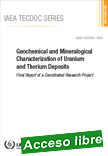 |
Geochemical and Mineralogical Characterization of Uranium and Thorium Deposits
Final Report of a Coordinated Research Project
IAEA TECDOC - 1929 ¦ English ¦ 194 pages ¦ Date published: 2020
New geochemical and mineralogical data from research conducted under the IAEA coordinated research project entitled Geochemical and Mineralogical Characterization of Uranium and Thorium Deposits has resulted in a better understanding of the genesis of uranium and thorium mineralization.
|
This publication presents a summary of the research and selected papers from the project’s partners. The results are expected to enhance exploration programmes, resource evaluation and sustainable supply of uranium and thorium for peaceful purposes.
|
 |
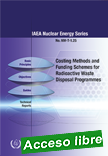 |
Costing Methods and Funding Schemes for Radioactive Waste Disposal Programmes
IAEA Nuclear Energy Series NW-T-1.25. ¦ English¦ STI/PUB/1900 ¦ 75 pages ¦ Date published: 2020
Reliable methods for estimating the cost of a radioactive waste disposal programme are crucial to ensure that the necessary funding for completing the disposal programme is available. Estimating the cost for disposal is however a challenging and complex task. Disposal programmes themselves are complex and long-term undertakings and conditions can be expected to change significantly over the time-span during which a disposal programme is developed and implemented.
|
This publication provides Member States with guidance on how to develop cost estimates for a disposal programme and on how to establish funding mechanisms. It will help readers in becoming informed clients by familiarizing themselves with the approaches and complexities in cost estimates and funding mechanisms for disposal. The publication is applicable to all waste categories and both near surface and geological disposal. It contains relevant examples and case studies from national programmes. The cost figures are intended to give an indication of the possible cost of certain parts or aspects of the disposal programme rather than to compare different disposal programmes’ costs.
|
 |
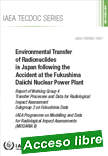 |
Environmental Transfer of Radionuclides in Japan following the Accident at the Fukushima Daiichi Nuclear Power Plant
Report of Working Group 4 Transfer Processes and Data for Radiological Impact Assessment Subgroup 2 on Fukushima Data. IAEA Programme on Modelling and Data for Radiological Impact Assessments (MODARIA II)
IAEA TECDOC No. 1927 ¦ English ¦ 358 pages ¦ Date published: 2020
The publication focuses on radioecologjcal experience and data acquired and lessons learned in Japan following the nuclear accident at the Fukushima Daiichi nuclear power plant in March 2011.
|
The publication brings together outcomes of the extensive studies, done by Japanese scientists and their colleagues from other countries, on characterization of radioecological transfer parameters in the terrestrial and aquatic environments of Japan affected by radionuclides released in the accident. The Japan specific data are systematically presented and compared to the global experience gained from the earlier nuclear accidents, military or industrial activities. Climate, landscape, agriculture and food processing practices, lifestyle and national dietary customs are shown as factors influencing transfer of radionuclides through the environment and human food chains. The publication summarizes country specific experience and puts it into existing global radioecological contexts.
|
 |
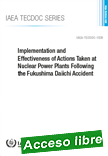 |
Implementation and Effectiveness of Actions Taken at Nuclear Power Plants following the Fukushima Daiichi Accident
IAEA TECDOC No. 1930 ¦ English ¦ 212 pages ¦ Date published: 2020
The IAEA reports on lessons learned and actions taken after the Fukushima Daiichi Accident. This publication addresses the challenges faced and the ongoing needs of Member State organizations which have been implementing and maintaining post-Fukushima actions. It discusses the actions taken (or to be taken), good practices and describes effective solutions to issues in implementation, verification, qualification and maintenance.
|
Also discussed are the approaches to measuring and maintaining effectiveness of actions as well as an analysis of merits, costs and benefits. Examples in decision making for implementation and follow-up policies, programmes and procedures to ensure sustainability in the long term are presented.
|
 |
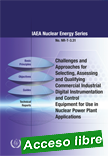 |
Challenges and Approaches for Selecting, Assessing and Qualifying Commercial Industrial Digital Instrumentation and Control Equipment for Use in Nuclear Power Plant Applications
IAEA Nuclear Energy Series NR-T-3.31 ¦ English ¦ STI/PUB/1871 ¦ Date published: 2020
The focus of this publication is on the activities required to demonstrate the suitability of commercial off the shelf (COTS) digital instrumentation and control equipment for use in nuclear safety applications. The publication provides a detailed discussion of the typical challenges associated with the use of COTS devices, including issues associated with unique vulnerabilities and features of digital products.
|
It outlines the strategy for digital COTS device assessment and qualification and describes the typical elements of the process. The publication addresses the specific steps of any justification, including identifying the requirements, selection of the supplier and candidate equipment, planning, assessment and identification of equipment life issues, suitability evaluation and all associated documentation. Guidance on maintaining the compliance of COTS devices as well as related regulatory aspects are also covered.
|
 |
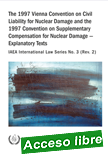 |
The 1997 Vienna Convention on Civil Liability for Nuclear Damage and the 1997 Convention on Supplementary Compensation for Nuclear Damage - Explanatory Texts
IAEA International Law Series No. 3 (Rev.2) ¦ English ¦ STI/PUB/1906 ¦ Date Published: 2020
This publication reproduces the explanatory texts on the nuclear liability instruments adopted under the IAEA’s auspices in 1997. Finalized by the International Expert Group on Nuclear Liability (INLEX), these texts constitute a comprehensive study and authoritative interpretation of the IAEA’s nuclear liability regime.
|
More particularly, the texts deal with the Protocol to Amend the Vienna Convention on Civil Liability for Nuclear Damage and the Convention on Supplementary Compensation for Nuclear Damage. The publication includes an overview, and brings together the texts, of the IAEA’s nuclear liability instruments. It also includes a matrix of comparative provisions in the various nuclear liability instruments, as well as the recommendations on how to achieve a global nuclear liability regime that were adopted by INLEX in 2012 following a request by Member States reflected in the IAEA Action Plan on Nuclear Safety. The explanatory texts were first updated in 2017 in the light of these important developments, and this second revision reflects further discussions within INLEX. It is hoped that the texts and the other documents included in this publication will increase awareness of nuclear liability as an important aspect of nuclear law by becoming a useful tool for legislators, government officials, technical experts, lawyers and nuclear insurers.
|
 |
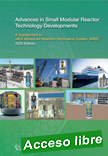 |
Nuclear Power for the Future: New IAEA Publication Highlights Status of SMR Development
A Supplement to: IAEA Advanced Reactors Information System (ARIS). 2020 Edition. 343 pages
A new IAEA publication on small modular reactors (SMRs), among the most promising emerging technologies in nuclear power, can help countries identify reactor designs to suit their needs as they look for reliable and affordable energy sources to slash greenhouse gas emissions and drive sustainable development.The 2020 edition of the biennial IAEA booklet Advances in Small Modular Reactor Technology Developments, published last month, provides the latest data and information on SMRs around the world, including detailed descriptions of 72 reactors under development or construction in 18 countries.
|
Expanding on the previous edition, the booklet for the first time contains annexes on waste management and disposal as well as a section on microreactors, which are very small SMRs intended for niche applications.
|
 |
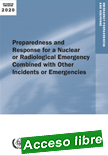 |
Preparedness and Response for a Nuclear or Radiological Emergency Combined with Other Incidents or Emergencies - Emergency Preparedness and Response
96 pages ¦ 3 figures ¦ Date published: 2020
This publication supports IAEA Member States in preparing for and responding to a combined emergency (as defined above), by describing possible challenges in meeting the EPR requirements established in GSR Part 7 [2]. The information provided in this publication is relevant to those responsible for establishing, maintaining and implementing nuclear or radiological EPR arrangements for a combined emergency, at all levels (i.e. international, national, regional, local and at the facility) and within all relevant organizations (e.g. operating organizations, regulatory bodies, technical support organizations, responders).
|
3 The information provided here is intended to complement and not to replace existing guidance and information provided in other IAEA publications for the preparedness and response to nuclear or radiological emergencies initiated by different causes.
|
 |
| |
|
|

|
|
|
| |
|
|
| |
| |
|
|
| |
| |
|
|
| |
| |
|
|
|
| |
| |
